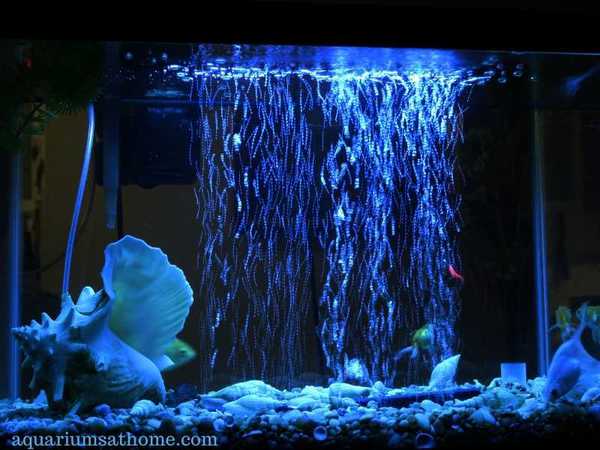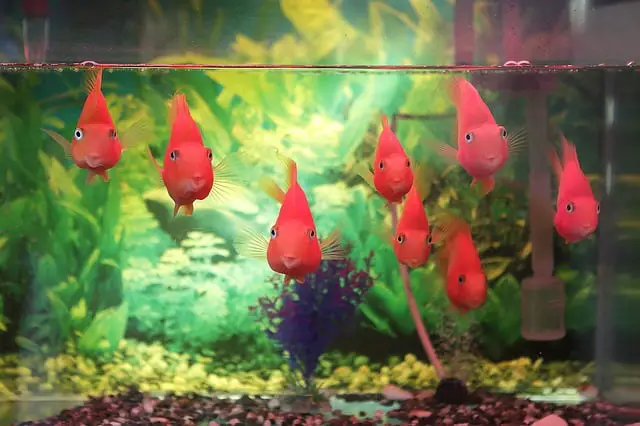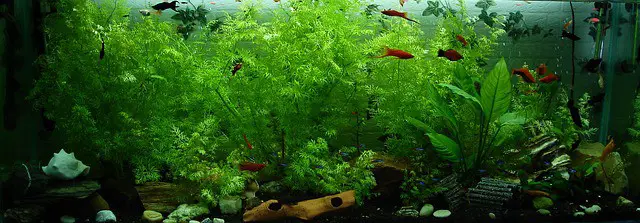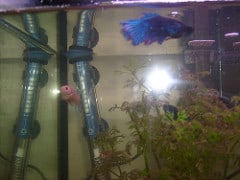Sometimes a new aquarium hobbyist just doesn’t know whether a testing kit is necessary or not. I’m guessing that’s why you’re here and that’s exactly why I created this article. If I didn’t have a test kit, here is how I’d test a fish tank.
Fish tank water can be tested for free just by bringing a sample down to your local fish store. This is something almost all aquarium stores will be happy to do for you. Another way to test fish tank water without a kit is to observe the fish to see if they look healthy. If aquarium water isn’t ideal, it won’t take long for the fish to show signs of distress.
Bringing a water sample to your local fish store and having it tested for free is about the best option. Sometimes the water just doesn’t look right and/or the fish appear to be struggling. When this happens and you don’t have a test kit, there are some things you can do. However, to test water parameters accurately you must have a test kit.
In this article, I’ll go over what you can do if you don’t have a testing kit, let’s get started.
What to do if You don’t have an Aquarium Water Test Kit
If you find yourself without a test kit but feel the tank’s water needs testing, you could always take a sample down to a local fish store. The store can quickly test for ammonia, nitrites, and nitrates. If those parameters are in-check, then your water should be good.
If you can’t get to the fish store, there are other things you can do for a short-term fix until you can get your hands on a kit.
- Performing a big water change with treated water can help temporarily reset or minimize issues in the water. If you’re trying to get by without a water test kit, I recommend doing a water change every 2 weeks minimum. You could wait longer between water changes if your tank is established (at least 1 year old) This will take time to figure out, though.
- When performing a water change, make sure to vacuum up decaying plant matter and excess food or fish waste. This will help keep your water parameters stable and minimize toxins in the tank.
- If it’s oxygen your tank needs and you don’t have a way to test oxygen levels. make sure the surface is agitated. This allows the carbon dioxide in the water to be released into the air at the surface and in exchange, the oxygen enters the water supply.
- Turning up the flow rate of the filter or adding a power head can also help with surface water agitation. The fish also enjoy the water movement and bubbles, which is an added bonus.
- Using an air stone with an air pump is an easy way to pump oxygen into the tank. Air stones release bubbles of air in the tank which rise to the top and pop. This is also another way to create surface agitation and one of my favorites.
- If you have more than one aquarium and you know the water parameters are good in one tank, you could transfer some of that water to other tanks.
- The best thing you can do however, if you don’t have a test kit is to perform regular maintenance on your fish tank. This maintenance will be what determines the success of the tank and health of your fish.
Is an Aquarium Test Kit Necessary?
There will be times when a test kit is necessary. There are other times it isn’t. Here are the times a testing kit is important to have and why (what you’re testing for).
It’s important to have a test kit when first setting up a fish tank. The nitrogen cycle is one of the most important times of your fish tank’s life before even adding any fish. Testing needs to be done to ensure the water has cycled and levels are good. Ammonia and nitrite need to be at 0 whereas nitrates can be around 20ppm, but lower is always better.
It’s also important to have a test kit ready for random water tests every two or three months after the tank is established. During the first year, once the water is cycled and you’re still adding fish, I’d test every 2 to 4 weeks. After the first year if everything looks good, go ahead and test every two to three months.
I used to test more often but find with stable tanks that don’t have a lot of new inhabitants, it’s just not necessary. That said, if you’re constantly adding and taking out fish, I’d be testing often. More tank activity equals more testing required.
If you’re using well water, you might need to still test the pH at first and periodically to ensure the water in the tank doesn’t need to be adjusted.

How do You Check the Oxygen Level in a Fish Tank?
If you ensure the tank has sufficient surface water agitation but you still want to make sure the water has enough oxygen, you can use a device named a dissolved oxygen tester.
I have never owned one myself as I’m a big believer of moving the water around as much as possible. If you want to check one out to see if it’s right for you, here are some dissolved oxygen meters available on Amazon you could check out.
How do You Know when Your Fish Tank is Ready for Fish?
Earlier we touched on the nitrogen cycle. This is a process your tank and water must go through before the water is fish safe.
Basically, you’re waiting until the ammonia, nitrites, and nitrate levels are where they should be before stocking the tank. Once they hit those levels, the fish tank is ready for fish.
For a more in-depth article on the nitrogen cycle, check this out.
Conclusion
As you can see, it’s impossible to test a fish tank’s water without a kit – unless you take your local fish store up on their free service of doing this for you.
The only other thing you can do in place of testing is to keep your tank maintained regularly and watch the fish to see if they start acting differently.
After a year or more of experience, you’ll know when it’s necessary to test the water. You might get cloudy algae-filled water or your fish could start dying off. When those types of things start happening, we need to ‘take action’ right away and correct the environment for the fish.
I didn’t mention it above but it’s worth offering this information. If you’re not going to invest in a testing kit, I’d highly recommend you make sure to use a product such as API tap water conditioner or the like. These products are dechlorinators that help get tap water ready for use in a fish tank and safe for your fish. It’s absolutely worth the money!
They’re our pets after all and deserve the best of care.
Thanks for reading and good luck with your aquarium hobby.
Related Posts
Can You Add a Water Conditioner While Fish Are in The Tank?
How Do You Cycle an Aquarium – The Nitrogen Cycle
What are Common Fish Tank Problems?






